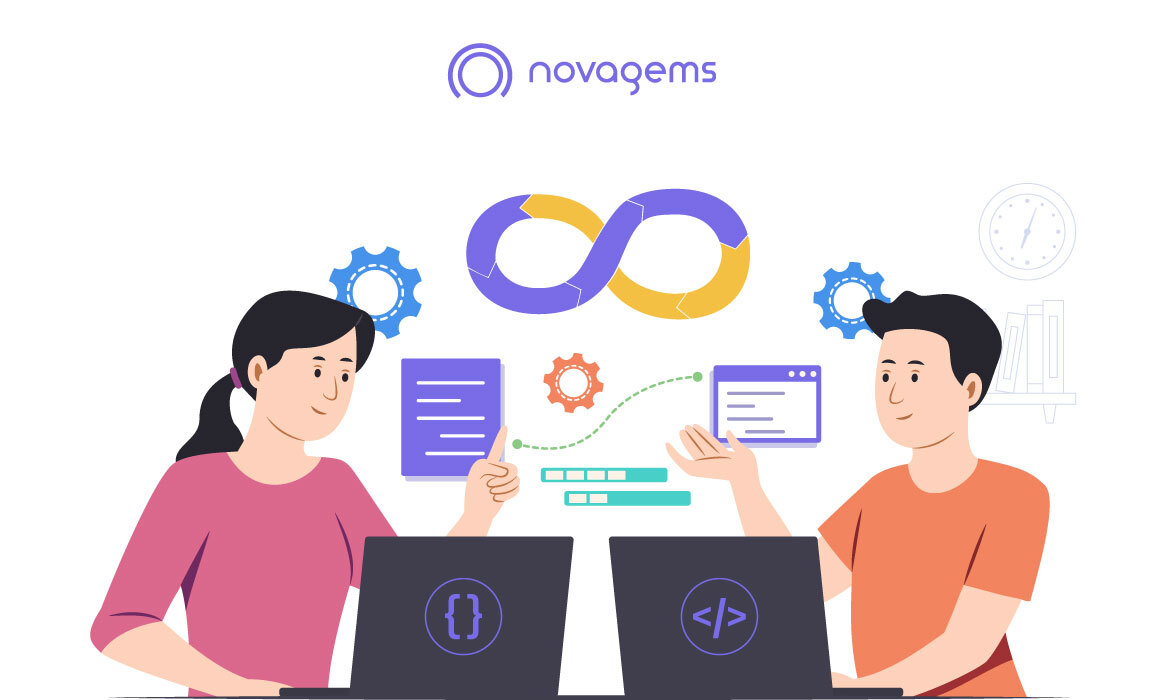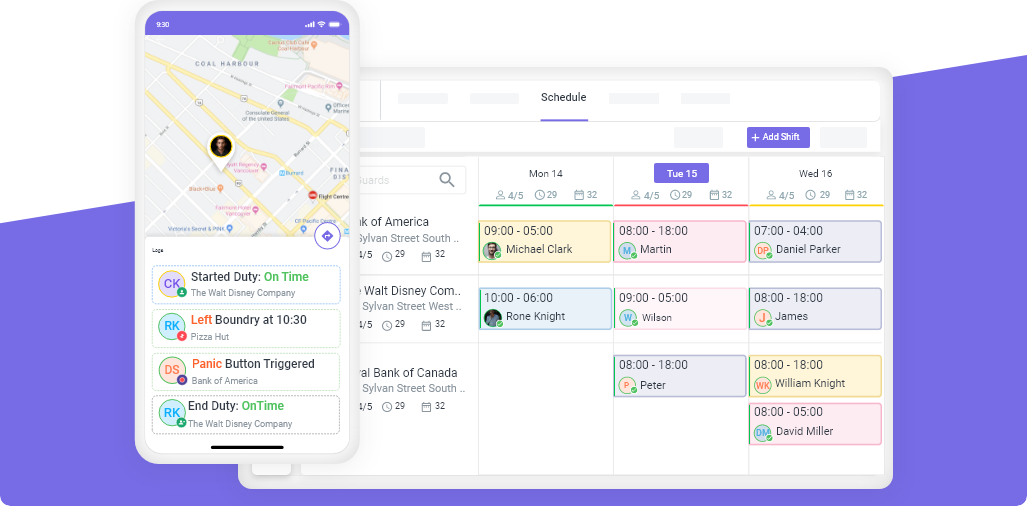Employee Engagement vs. Employee Satisfaction: Understanding the Difference
Wed, Jun 12, 2024
Read in 7 minutes
While there is a fine line that distinguishes employee engagement and employee satisfaction there is still a vast difference between them both. Understand the difference and utilize both to make a difference.

Understanding the difference between employee engagement and employee satisfaction is key for creating a happy and productive workforce. Now think about this - if your employees are engaged, then does that mean they are productive too? The answer is both yes and no. An engaged employee does not guarantee a productive employee. That is why job satisfaction is important too. These two concepts, though related, focus on different aspects of the employee experience.
Companies have been trying to achieve both without understanding the key differences. That is why they often do not see any results. Many companies believe that workforce engagement is what makes them productive. But if the employee is not satisfied, then their productivity will decrease too. Let’s explore what each term means, how they relate, and why both are important for your organization.
What Is Employee Satisfaction?
Employee satisfaction refers to how content employees are with their job and work environment. It includes their feelings about their compensation, benefits, job security, work-life balance, and relationships with colleagues and supervisors. When employees are satisfied, they are happy with their job conditions and their needs are being met.
This helps the companies reduce employee turnover by a great margin and hence reduce their overhead costs too. After all, it takes time and money to hire and retain new employees. And let’s not forget that over time you will lose great talent too if people keep leaving.
-
Factors Contributing to Job Satisfaction
-
Compensation and Benefits: Fair pay, health insurance, retirement plans, and other perks make employees feel valued.
-
Work-Life Balance: Flexible working hours, the ability to work from home, and enough time off help employees balance work with personal life.
-
Work Environment: A safe, comfortable, and well-equipped workplace contributes to job satisfaction.
-
Job Security: Assurance about their future with the company gives employees peace of mind.
-
Relationships: Positive interactions with coworkers and supervisors make the work environment more pleasant.

While employee satisfaction is important for preventing turnover, it doesn’t necessarily mean that employees are motivated or committed to going above and beyond in their roles. They might be content but not actively engaged in the workplace. It may also mean that they are just going to come and do their jobs. Many companies might think that is okay, but in the longer run it is not. It will not help the company to increase its overall efficiency.
What Is Employee Engagement?
Employee engagement goes beyond satisfaction. It refers to the emotional commitment and dedication employees have towards their jobs and the organization. They not only aim to achieve their goals and objectives. But they align their goals with the company’s goal too. Engaged employees are passionate about their work, feel a sense of purpose, and are motivated to contribute to the company’s success. They feel valued and heard in the company and they are in the company not only for the pay but for job satisfaction too.
-
Key Drivers of Engagement in the Workplace
-
Purpose and Meaning: Employees need to feel that their work is meaningful and aligns with their values.
-
Development Opportunities: Access to training and career growth helps employees feel invested in their future with the company.
-
Recognition and Feedback: Regular acknowledgment of their efforts and constructive feedback keep employees motivated.
-
Supportive Work Environment: Encouragement and support from managers and peers foster a positive atmosphere.
-
Autonomy: Giving employees control over how they complete their tasks and make decisions increases their engagement.
Engagement in the workplace leads to higher productivity, innovation, and employee retention. Engaged employees are more likely to take initiative, go the extra mile, and stay with the company longer.
Relationship Between Satisfaction and Engagement
While employee satisfaction and engagement are related, they are not the same. Satisfaction is about how happy employees are with their job conditions, whereas engagement is about how committed and motivated they are to contribute to the organization.
Examples of Satisfaction and Engagement
- Satisfied but Not Engaged:
An employee might be satisfied with their salary and work conditions but may not feel a deep connection to their work or the company’s goals. They do their job but don’t put in extra effort.
- Engaged but Not Fully Satisfied:
An employee might be highly engaged and passionate about their work but may have concerns about certain aspects of their job, such as work-life balance or compensation. Despite these concerns, they are still motivated to perform well.
Balancing both satisfaction and engagement is key to building a thriving workforce. Employees need to be happy with their job conditions to prevent dissatisfaction and turnover. But they also need to be engaged to drive performance and innovation.
Key Differences Between Employee Engagement and Employee Satisfaction
1. Emotional Commitment vs. Contentment:
Engagement is about the emotional connection and commitment to the job and company. While satisfaction is about being content with job conditions. This also means that while they are not actively looking for a change, they will switch if a better opportunity comes their way.
2. Impact on Performance:
Engaged employees are motivated to perform at their best and contribute to the company’s success. Whereas satisfied employees may only meet basic expectations. Satisfied employees will come in, do their job and leave. Engaged employees will be happy to see the company grow and help you achieve those goals.
3. Long-Term Benefits:
Engagement leads to long-term benefits like higher productivity, lower turnover, and increased innovation. Satisfaction ensures employees are happy and reduces immediate turnover risks.
-
Why Both Are Important
Both workforce engagement and satisfaction are crucial for different reasons. While satisfaction helps keep employees content and reduces turnover, engagement drives them to perform well and stay committed to the company’s goals. Focusing on both can lead to a more productive, innovative, and stable workforce.
How to Gain Insight Through Employee Satisfaction
Understanding employee satisfaction is crucial for improving both satisfaction and engagement. Here are some methods to measure and understand job satisfaction:
-
Methods to Measure Job Satisfaction
-
Surveys and Questionnaires: Regularly conduct surveys to gather feedback on various aspects of the workplace, including compensation, benefits, work environment, and job roles. Employee satisfaction surveys are a great way to gain insights and plan for the future
-
One-on-One Interviews: Engage in individual discussions to understand employees’ feelings and suggestions.

-
Focus Groups: Organize small group discussions to explore specific issues in depth.
-
Exit Interviews: Collect feedback from departing employees to identify reasons for leaving and areas for improvement. You can even share employee engagement surveys with them to gain more insight.
-
Employee Feedback Platforms: Use tools and software to gather continuous feedback and monitor satisfaction levels in real time.
-
Benefits of Measuring Job Satisfaction
By regularly collecting and analyzing this data, organizations can identify trends, address concerns promptly, and create targeted strategies to enhance job satisfaction and workforce engagement. Understanding what makes employees satisfied can help tailor initiatives to improve their overall experience and commitment to the company.
Conclusion
Understanding the difference between employee satisfaction and employee engagement is essential for building a productive and happy workforce. While satisfaction ensures that employees are content with their job conditions. Engagement drives their commitment and motivation to contribute to the organization’s success. Balancing both is key to achieving long-term benefits and creating a thriving work environment.
Implementing strategies to measure and improve both satisfaction and engagement will help organizations attract, retain, and nurture top talent. Hence leading to sustained success and growth. By focusing on these aspects, businesses can ensure they create a positive and engaging workplace where employees are not only happy. But also deeply committed to their work and the company’s goals.
Creating a balanced approach to employee satisfaction and engagement can significantly enhance the overall performance and stability of your organization. You will not see the results immediately, it will take time and dedication. Also, make sure to study the concepts in depth so that you can easily see the differences and similarities.
Get a Free Trial
Sign up For Newsletter
Latest Blog Posts
Get Started
Start being productive & grow your business
with Novagems




